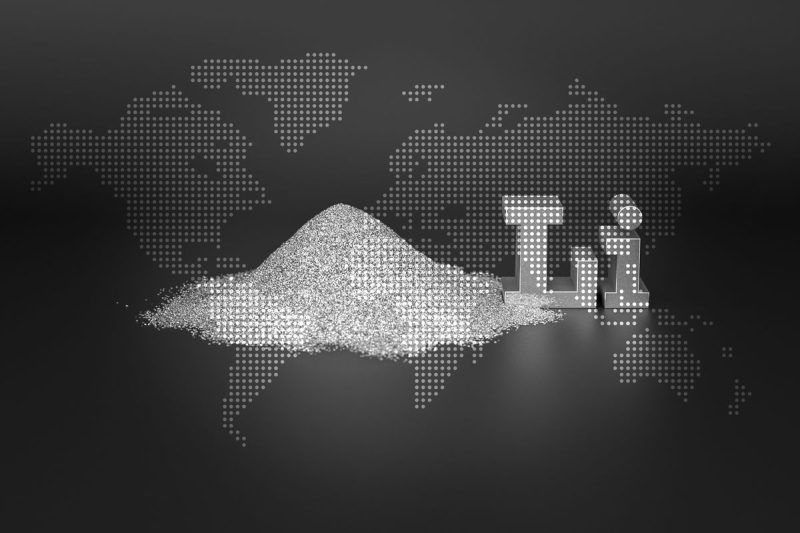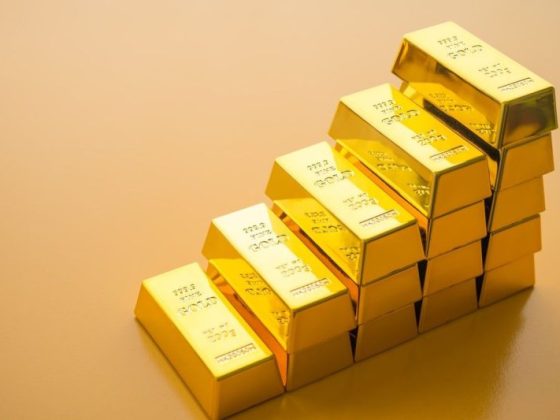Those interested in the lithium sector and investing in lithium stocks are often curious about which countries produce the most of the battery metal, but they may not stop to consider the top lithium reserves by country.
Major lithium-producing countries are, of course, home to a large number of lithium companies. Many of the world’s top lithium producers also hold significant reserves, and their reserves can give an idea of how much room those countries have to grow. At the same time, nations with high reserves may become more significant lithium players in the future.
Looking forward, lithium demand is expected to continue increasing. That’s because, together with metals such as cobalt, lithium is a key raw material in the lithium-ion batteries used to power electric vehicles, and it is also essential for the energy storage sector.
On that note, here’s an overview of lithium reserves by country, with a focus on the four countries that host the world’s largest lithium deposits. Data is based on the most recent information from the US Geological Survey.
1. Chile
Lithium reserves: 9.3 million metric tons
Chile holds the highest lithium reserves in the world at 9.3 million metric tons. The country reportedly holds most of the world’s “economically extractable” lithium reserves, and its Salar de Atacama hosts approximately 33 percent of the world’s lithium reserve base.
Chile was the second biggest producer of lithium in 2023 at 44,000 metric tons (MT). SQM (NYSE:SQM) and Albemarle (NYSE:ALB) are the key lithium producers in Chile, with operations in the Salar de Atacama.
In late April 2023, Chilean President Gabriel Boric announced plans to partially nationalize the country’s lithium industry in a bid to bolster the economy and protect the environment. “This is the best chance we have at transitioning to a sustainable and developed economy,” he said at the time.
Chile’s state-owned mining company Codelco has negotiated for much larger stakes in both SQM and Albemarle’s lithium assets in the country, and will have controlling interests in all operations in that salar going forward.
According to the Baker Institute, Chile’s strict legal framework surrounding mining concessions has hamstrung the lithium powerhouse from gaining a bigger share of the global lithium market comparable with this mineral largess.
2. Australia
Lithium reserves: 4.8 million metric tons
Australia’s lithium reserves stand at 4.8 million metric tons, the majority of which are found in Western Australia. Unlike those found in Chile and Argentina, Australia’s lithium reserves are in the form of hard-rock spodumene deposits.
Although it is second to Chile in reserves, Australia was the largest lithium-producing country in the world in 2023, with many operational lithium mines in the country. The country is home to the Greenbushes lithium mine, which is operated by Talison Lithium, a joint venture owned composed of lithium producers Tianqi Lithium (OTC Pink:TQLCF,SZSE:002466), Australian miner IGO (ASX:IGO,OTC Pink:IPGDF) and Albemarle. Greenbushes has been producing lithium since 1985.
A sharp decline in lithium prices has led some of the country’s lithium companies, including Arcadium Lithium (NYSE:ALTM) and Core Lithium (ASX:CXO,OTC Pink:CXOXF) to curtail or outright halt their lithium operations and development projects until market conditions improve.
3. Argentina
Lithium reserves: 3.6 million metric tons
Argentina ranks third in terms of global lithium reserves at 3.6 million metric tons. It’s worth noting that Argentina, Chile and Bolivia comprise the “Lithium Triangle,” which hosts more than half of the world’s lithium reserves. The country is also the fourth largest lithium producer in the world, and last year it put out 9,600 MT of the metal.
In May 2022, the Argentine government committed to investing up to US$4.2 billion in its lithium industry over the next three years with the goal of increasing lithium output. More recently, in April 2024, the government greenlit Argosy Minerals’ (ASX:AGY,OTC Pink:ARYMF) expansion of its Salta site to raise annual lithium production from 2,000 MT to 12,000 MT.
Argentina hosts around 50 advanced lithium mining projects, reports Fastmarkets. “Argentina’s lithium production remains cost-competitive even in a low-price environment,” said Ignacio Celorrio, executive VP of legal and government affairs at Lithium Argentina.
4. China
Lithium reserves: 3 million metric tons
China holds lithium reserves of 3 million metric tons. The country has a mix of deposit types; lithium brines make up the majority of its reserves, but it has spodumene and lepidolite hard-rock reserves as well.
Last year it produced 33,000 MT of the mineral, a 7,400 MT increase from the previous year. While it does have significant production and is working to increase it, the Asian nation currently still imports most of the lithium it needs for its battery cells from Australia.
China’s lithium usage is high due to its electronics manufacturing and electric vehicle industries. It also produces the majority of the world’s lithium-ion batteries and hosts most of the world’s lithium-processing facilities.
In October 2024, the US State Department accused China of flooding the market with lithium to create a low price environment to kill off ex-China competition. “They engage in predatory pricing… (they) lower the price until competition disappears. That is what is happening,” stated Jose W. Fernandez, the US Under Secretary of State for Economic Growth, Energy, and the Environment.
Other lithium reserves by country
Total worldwide lithium reserves stand at 28,000,000 MT. While Chile, Australia, Argentina and China are home to the world’s highest lithium reserves, other countries also hold significant amounts of the metal.
Here’s a quick look at these other nations:
United States — 1,100,000 MT Canada — 930,000 MT Brazil — 390,000 MT Zimbabwe — 310,000 MT Portugal — 60,000 MTAs the lithium industry continues to grow, production has followed, and many of these countries with high reserves are becoming significant producers as well.
FAQs for lithium reserves
Where in the world are the best lithium reserves?
Chile has the largest lithium reserves, and the three countries that make up the Lithium Triangle — Argentina, Bolivia and Chile — together account for more than 63 percent of the world’s lithium reserves.
How should India use its newly found lithium reserves?
In 2021, India’s first lithium deposit was found in the Mandya district of Karnataka. More recently, a much larger amount of lithium has been uncovered in India. In early 2023, the Geological Survey of India reported the discovery of 5.9 million MT of the material in the Salal-Haimana area of the Reasi district in Jammu and Kashmir.
The Indian government hopes to develop its newly found lithium reserves in order to reduce its lithium imports and build out its domestic zero-emissions technology industry. The first step involve changes to mining laws that will allow private firms to mine lithium in India. ‘To leverage the deposits, the government has eased the mining process by allowing the auction of lithium mines,’ reported the East Asia Forum.
What are the biggest lithium reserves in Europe?
Portugal has the biggest lithium reserves in Europe, coming in at 60,000 MT. The Southern European country produced 380 MT of lithium in 2023, the same as the previous year.
Securities Disclosure: I, Melissa Pistilli, hold no direct investment interest in any company mentioned in this article.

